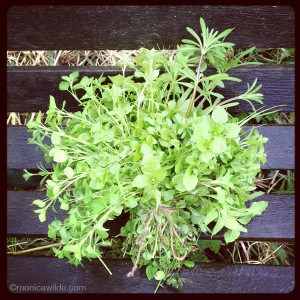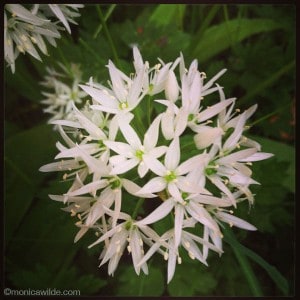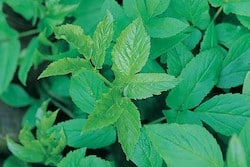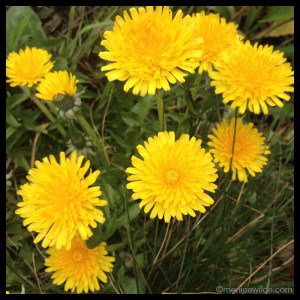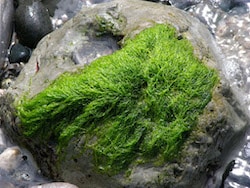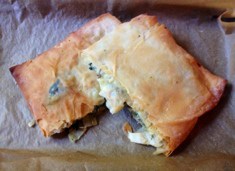Foraging for wild foods has certainly enjoyed a comeback, especially as many high-profile chefs are adding wild delicacies to their repertoires.
If you love camping and great food, then foraging is a great way to put super-fresh, tasty delicacies on the campfire menu.
Monica Wilde gives us an introduction to how to go about it and what to look out for.
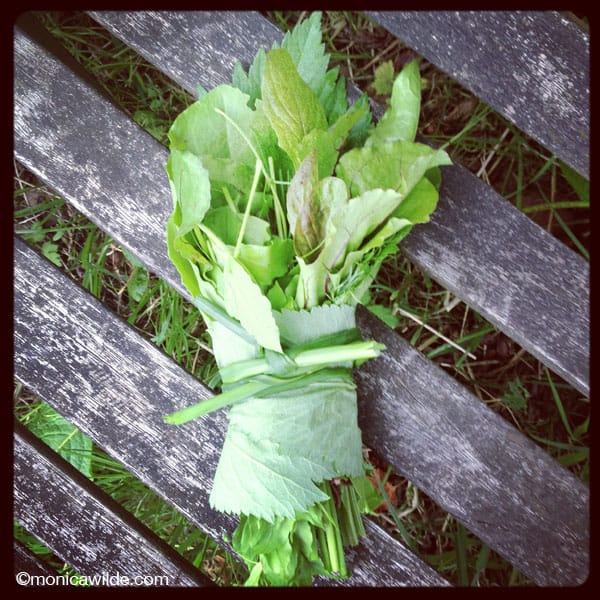
Wild salad
Where to forage
You can forage pretty much anywhere that you camp. In the UK, it’s legal to forage for your supper as long as it’s not in someone’s front garden, it’s for your personal consumption and you don’t uproot a plant without the landowner’s permission.
Common sense tells you to avoid picking from polluted roadsides or areas frequented by dog walkers, and to only pick what looks fresh – just as you wouldn’t choose to buy wilted, yellowing lettuce from a shop.
When to forage
You can forage for wild food pretty much all year round. Obviously in the winter there is far less choice, but oyster mushrooms are often found in December, wintercress in January and wood ears in February.
The better weather brings far more choice and is far more likely to coincide with a camping break.
What to forage
There are more than a hundred species of wild greens and wild mushrooms that you could put in the pot. If you only learn two a week, you’ll have mastered them in a year!
The easiest way to approach it is to learn the ‘choice’ ones – those with the most flavour and availability. Avoid those that have poisonous lookalikes until you have more confidence.
Take extreme care!
Don’t pick or eat anything you’re unsure of. It’s a good idea to get a book with clear pictures to use as a guide, rather than risking it with a best guess. Take extra special care when identifying the following:
- Cow parsley (edible) v hemlock (deadly)
- Sorrel (edible) v lords and ladies (caustic)
- Alexanders and wild parsnip (edible) v hemlock water dropwort (deadly)
- All gilled mushrooms
Two VERY important rules
Don’t pick more than you need for a simple meal. Leave plenty for others and for the wildlife.
Don’t pick anything you’re unsure of. If in doubt, leave it out. The suggestions below are a guide only and you should always check VERY carefully.
Here are just a very few of the common wild greens worth learning
Chickweed

A fantastic wild herb with a mild, ‘cool’ flavour. Chickweed (Stellaria media) is excellent as the bulk of a wild salad with the addition of stronger tasting leaves from other plants, and it can also be made into pakoras or soup. It grows almost everywhere, especially in ground that has been dug over or disturbed.
Nettle
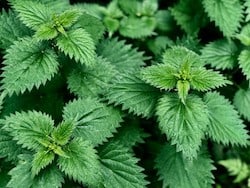
Use only the very tender nettle tops and steam like spinach or make soup – especially if you find some wild garlic to go with it!
Wild garlic
There are four types of wild garlic in Britain. Wild garlic (Allium ursinum), three-cornered leek (Allium triqueta), few-flowered leek (Allium paradoxum) and crow’s garlic (Allium vineale). They grow along the edges of streams and ditches, and very often you can smell the garlic in the air long before you see it. See our wild garlic primer and recipes.
Ground elder
Once called goutweed, this invasive garden weed was brought here by the Romans as a cherished vegetable. Goutweed (Aegopodium podagraria) has a celery type taste and its leaves can be added raw to salads, or be chopped into mashed potato or omelettes.
The dried seed makes a great flavouring and can be used just like celery seed.
Dandelion
All parts of the common dandelion (Taraxacum officinale) are edible. There are more than 253 all-edible, British sub-species. In fact, there are people called taraxacologists who just study this flower!
The leaves can be added to salads (the brighter green young ones are the least bitter), the roots can be roasted as a chicory-type coffee substitute, and the flower petals can be eaten, or be made into flower vinegar, syrup or wine.
Seaweeds
All British seaweeds are edible but the degree of ‘chewability’ varies enormously. Adding a long piece of kelp to a stew will impart a delicious umami flavour, but remove it before serving.
Green gutweed (pictured) can be washed and flash-fried in oil with toasted sesame seeds and soy sauce for a delicious crispy seaweed campfire snack. Purple dulse makes a delicious seasoning and caragheen can be used instead of gelatin to make wildflower panacottas. For purple panacotta, use the purple flowers of rosebay willowherb, for a yellow one use calendula petals and use rose petals for pink.
Our Campfire Magazine spanokapitta
Will we ever buy spinach again? Probably not, now we’ve discovered nettles!
We picked a colander’s worth of the nicest, freshest leaves from the tops of nettles (wear gloves or snip with scissors directly into your bowl).
We rinsed them and blanched for five minutes, then mixed with sunflower seeds (or use pine nuts), chopped feta cheese (or vegan cheese), some chopped fresh mint and lemon thyme (use whatever herbs you have handy, though), added some fried chopped onion and garlic, a bit of salt and pepper and wrapped in filo or puff pastry.
Into the oven for 30 minutes, or try it out on your camping stove. We made small pasty-type packages and fried them slowly on the Cadac. Delicious with tzatziki or a simple salad.
About Monica Wilde
By day, Monica Wilde, a life-long forager, works at Napiers the Herbalists. She’s been a key instigator in the development of their licensed THR (traditional herbal registration) medicines and an advocate for quality, safety and research in herbal medicine. By night, she’s researching drug-herb interactions for her MSc Herbal Medicine thesis at the University of Central Lancashire. At weekends, Monica runs foraging courses and events specialising in wild food and wild medicine.

